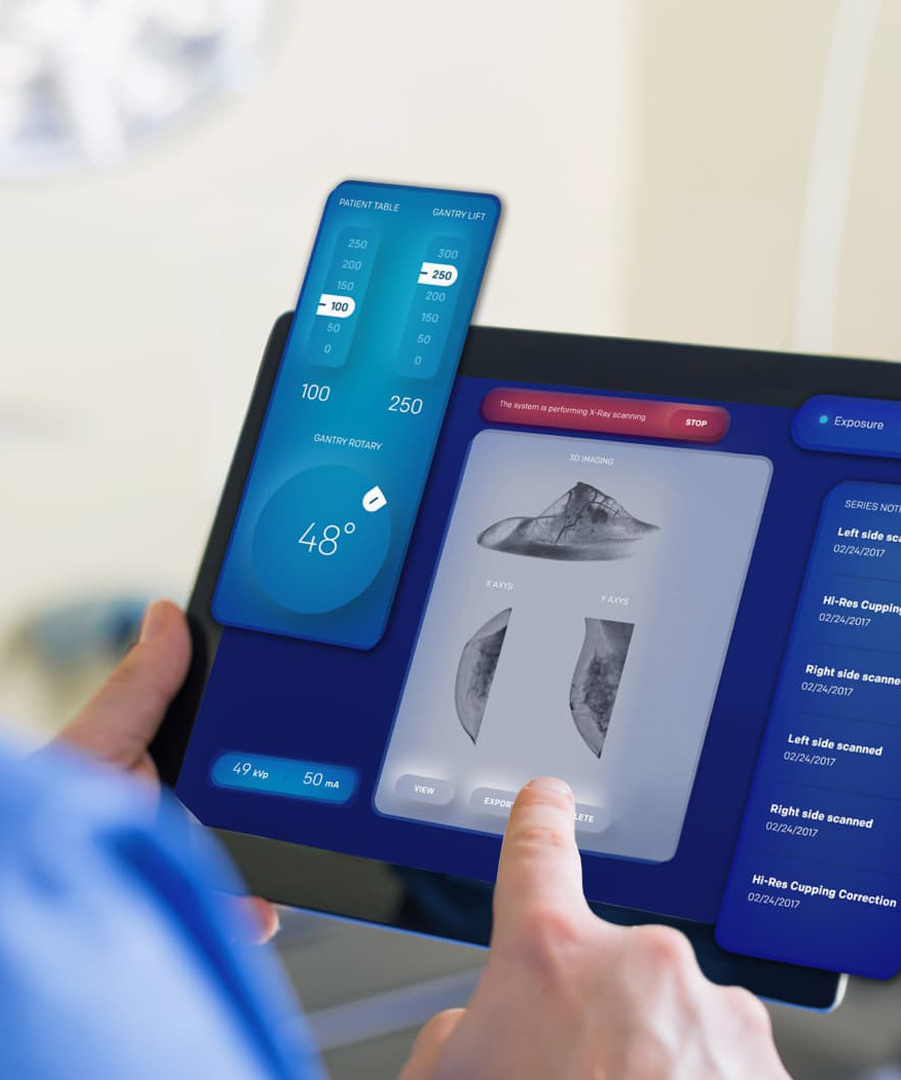


รถดับเพลิงโฟม ซึ่งเป็นอุปกรณ์สำคัญของอุปกรณ์ดับเพลิงสมัยใหม่ มีบทบาทสำคัญอย่างยิ่งในการดับเพลิงประเภทต่างๆ POWERSTAR มีความเชี่ยวชาญด้านการวิจัย พัฒนา และผลิตรถดับเพลิงหลากหลายรุ่น และสามารถปรับแต่งรถดับเพลิงโฟมให้มีตัวถังและความจุที่แตกต่างกันตามความต้องการของลูกค้า ซึ่งรวมถึงรุ่นต่างๆ เช่น รถดับเพลิงโฟมอีซูซุ รถดับเพลิงโฟม HOWO, รถดับเพลิงโฟม FAW และรถดับเพลิงโฟม Shacman ตอบสนองความต้องการเฉพาะด้านในสถานการณ์ต่างๆ เช่น โรงงานปิโตรเคมี สนามบิน และการดับเพลิงในเมือง บทความนี้จะแนะนำรายละเอียดเกี่ยวกับคำจำกัดความ หลักการทำงาน ข้อดีที่สำคัญ และสถานการณ์การใช้งานหลักของรถดับเพลิงโฟม ช่วยให้คุณเข้าใจคุณค่าของอุปกรณ์ดับเพลิงเฉพาะทางนี้ได้อย่างถ่องแท้
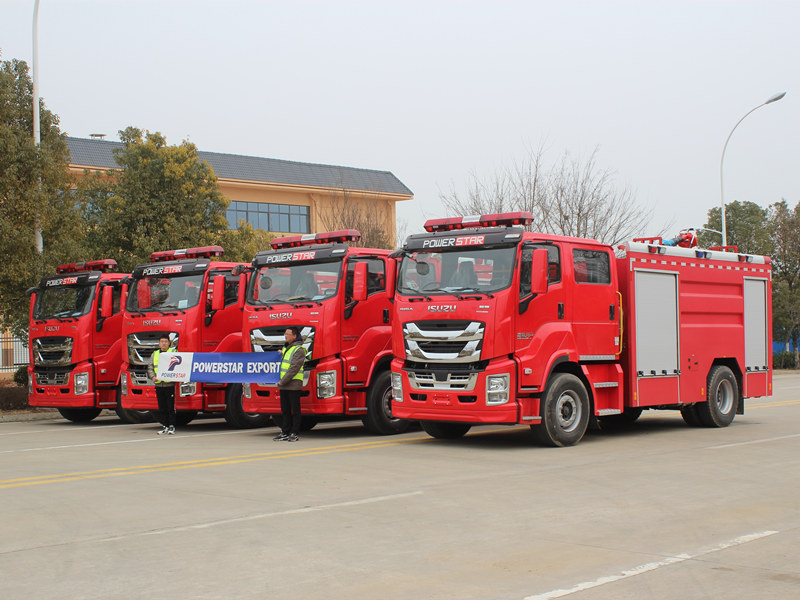
1. รถดับเพลิงโฟมคืออะไร?
รถดับเพลิงโฟมเป็นรถดับเพลิงชนิดพิเศษที่ติดตั้งอุปกรณ์ผสมโฟมและระบบฉีดพ่น POWERSTAR ผลิตรถดับเพลิงโฟมหลากหลายรุ่นโดยใช้แชสซีคุณภาพสูงจากแบรนด์ดังทั้งในประเทศและต่างประเทศ เช่น ISUZU, HOWO, FAW และ Shacman ควบคู่กับระบบแบ่งสัดส่วนโฟมที่มีประสิทธิภาพ รถดับเพลิงเหล่านี้ส่วนใหญ่ใช้ในการดับเพลิงที่เกี่ยวข้องกับของเหลวไวไฟ เช่น น้ำมันและสารเคมี ต่างจากรถดับเพลิงถังน้ำทั่วไป รถดับเพลิงโฟมไม่เพียงแต่บรรทุกน้ำเท่านั้น แต่ยังติดตั้งถังบรรจุโฟมเหลวโดยเฉพาะและระบบแบ่งสัดส่วนอัจฉริยะที่ผสมน้ำและโฟมเข้มข้นในอัตราส่วนที่กำหนดเพื่อสร้างโฟมดับเพลิง
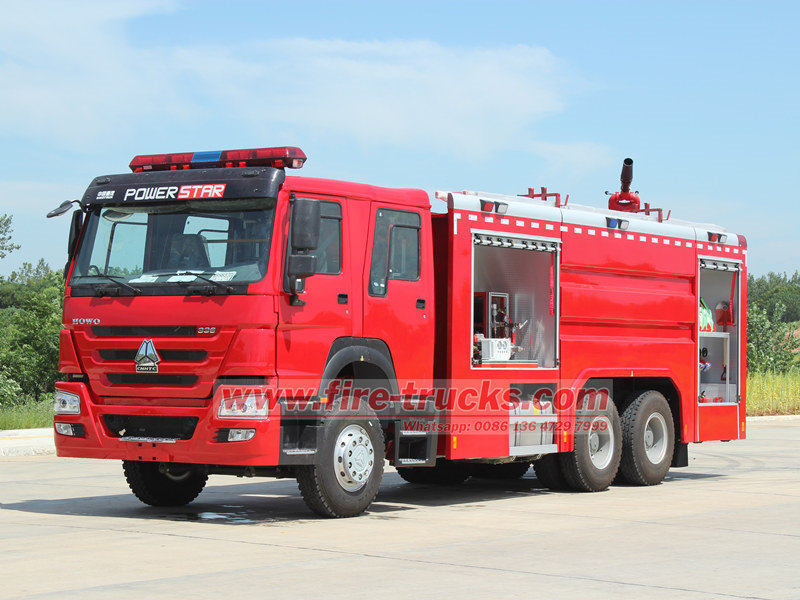
รถดับเพลิงเหล่านี้โดยทั่วไปจะได้รับการดัดแปลงมาจากโครงรถบรรทุกสำหรับงานหนัก และสามารถจำแนกประเภทรถดับเพลิงโฟมขนาดใหญ่ ขนาดกลาง และขนาดเล็ก ตามความจุของเหลว พาวเวอร์สตาร์ ของ รถดับเพลิงโฟม HOWO สามารถบรรทุกของเหลวได้มากกว่า 15 ตัน ขณะที่รถดับเพลิงโฟมขนาดกลางของอีซูซุ ซึ่งดัดแปลงบนแชสซีของอีซูซุ ผสานความคล่องตัวและความสามารถในการดับเพลิงได้อย่างสมดุล ในช่วงไม่กี่ปีที่ผ่านมา ด้วยความก้าวหน้าทางเทคโนโลยี รถดับเพลิงโฟมขนาดเล็กจึงได้รับการพัฒนาให้มีความยืดหยุ่นและคล่องตัว เหมาะอย่างยิ่งสำหรับพื้นที่แคบและตอบสนองต่อเพลิงไหม้เบื้องต้นได้อย่างรวดเร็ว คุณค่าหลักของรถดับเพลิงโฟมอยู่ที่ความสามารถในการผลิตและฉีดพ่นโฟมดับเพลิงได้อย่างรวดเร็ว ครอบคลุมพื้นผิวของวัสดุที่กำลังลุกไหม้ได้อย่างมีประสิทธิภาพ เพื่อแยกออกซิเจนและลดอุณหภูมิ จึงสามารถดับเพลิงได้อย่างรวดเร็ว
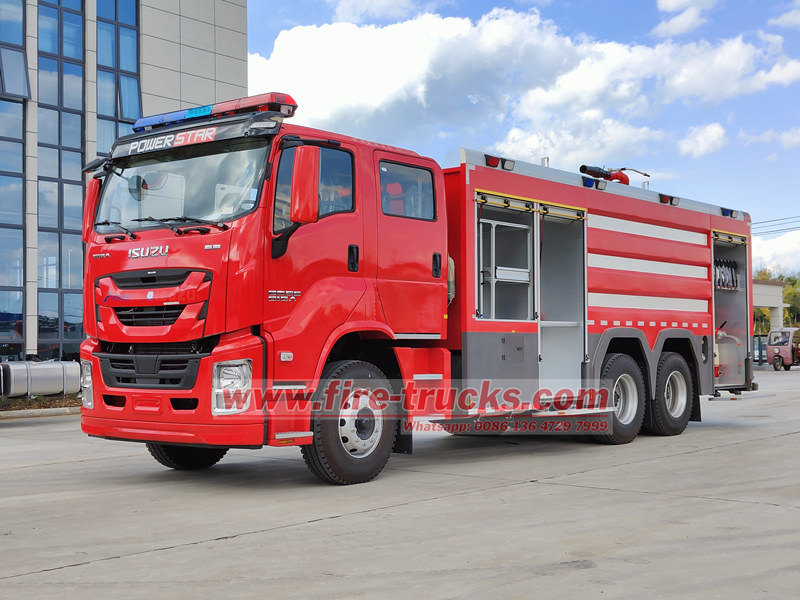
2. หลักการทำงานของรถดับเพลิงโฟม
หลักการทำงานของรถดับเพลิงโฟมคือระบบการผสมและจ่ายของเหลวที่แม่นยำ เมื่อมาถึงที่เกิดเหตุ ผู้ปฏิบัติงานจะเลือกอัตราส่วนโฟมที่เหมาะสม (โดยทั่วไปคือ 3% หรือ 6%) ตามสภาพเพลิงไหม้ ปั๊มดับเพลิงจะดูดน้ำจากถังเก็บน้ำ ขณะที่ปั๊มโฟมจะดูดของเหลวโฟมเข้มข้นออกจากถังโฟม ทั้งสองชนิดจะถูกผสมในเครื่องผสมตามอัตราส่วนที่ตั้งไว้โดยอัตโนมัติ
จากนั้นสารละลายโฟมผสมจะถูกส่งผ่านสายยางดับเพลิงไปยังเครื่องตรวจจับโฟมหรือหัวฉีดโฟม ซึ่งจะดูดอากาศเข้าไประหว่างการฉีดพ่นเพื่อสร้างโฟมดับเพลิง โฟมชนิดนี้มีพื้นผิวและความทนทานที่ดีเยี่ยม ช่วยแยกวัสดุที่กำลังลุกไหม้ออกจากออกซิเจนได้อย่างมีประสิทธิภาพ สำหรับรถดับเพลิงโฟมขนาดใหญ่ เครื่องตรวจจับโฟมสามารถไปได้ไกลกว่า 70 เมตร ในขณะที่ระบบโฟมขนาดเล็กที่ดัดแปลงบนรถกระบะจะเหมาะสำหรับการดับเพลิงที่แม่นยำในระยะใกล้มากกว่า
ที่น่าสังเกตคือ รถดับเพลิงโฟมระดับไฮเอนด์สมัยใหม่ติดตั้งระบบควบคุมอัจฉริยะที่สามารถปรับอัตราการผสมและโหมดการพ่นได้แบบเรียลไทม์เพื่อให้เหมาะสมกับเพลิงไหม้ประเภทต่างๆ บางรุ่นยังผสานรวมระบบดับเพลิงแบบผงแห้ง ทำให้เกิดความสามารถในการดับเพลิงแบบผสมผสานที่ช่วยเพิ่มประสิทธิภาพได้อย่างมาก
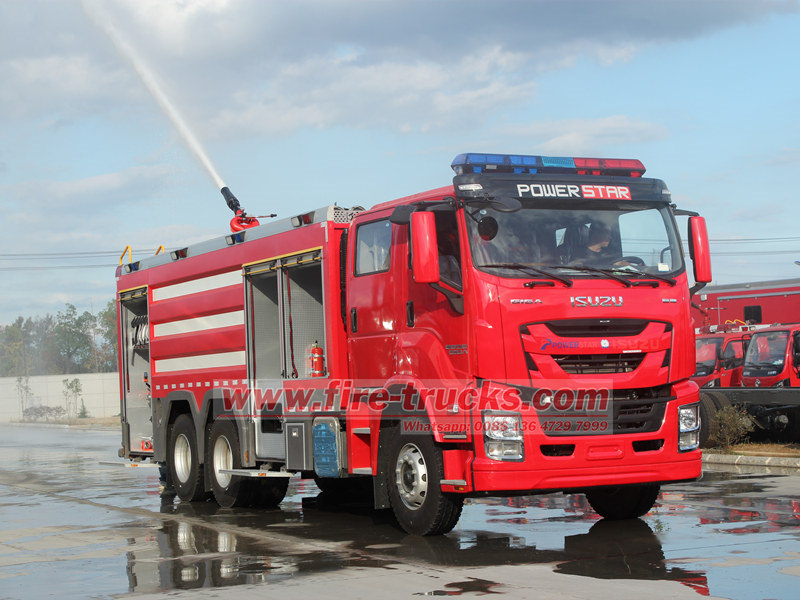
3. ข้อดีที่สำคัญของรถดับเพลิงโฟม
รถดับเพลิงโฟม
มีข้อได้เปรียบเหนือรถดับเพลิงแบบดั้งเดิมหลายประการ ทำให้รถดับเพลิงรุ่นนี้เป็นอุปกรณ์ดับเพลิงที่ได้รับความนิยมสำหรับพื้นที่เสี่ยงภัยสูง เช่น โรงงานปิโตรเคมีและสนามบิน ข้อได้เปรียบหลักๆ ของรถดับเพลิงรุ่นนี้สะท้อนให้เห็นได้อย่างชัดเจนในประเด็นต่อไปนี้
1. ประสิทธิภาพการดับเพลิงที่มีประสิทธิภาพสูง:
โฟมดับเพลิงสามารถครอบคลุมพื้นที่เพลิงไหม้ขนาดใหญ่ได้อย่างรวดเร็ว โดยเฉพาะเพลิงไหม้ที่เกิดจากน้ำมัน ซึ่งมีประสิทธิภาพในการดับเพลิงสูงกว่าน้ำเพียงอย่างเดียวถึง 10 เท่า ชั้นโฟมไม่เพียงแต่ช่วยแยกออกซิเจนเท่านั้น แต่ยังช่วยป้องกันการระเหยของไอระเหยของเชื้อเพลิงได้อย่างมีประสิทธิภาพ ป้องกันการติดไฟซ้ำ
2. การอนุรักษ์น้ำ:
เมื่อเทียบกับการดับเพลิงด้วยน้ำ การดับเพลิงด้วยโฟมช่วยลดการใช้น้ำได้อย่างมาก เรื่องนี้สำคัญอย่างยิ่งสำหรับการดับเพลิงในพื้นที่ที่มีทรัพยากรน้ำจำกัด และนี่คือเหตุผลที่อุปกรณ์ขนาดเล็กอย่างรถดับเพลิงแบบกระบะจึงมีบทบาทสำคัญ
3. ความปลอดภัยสูง:
รถดับเพลิงโฟมโดยทั่วไปจะมีจอมอนิเตอร์โฟมควบคุมระยะไกล ช่วยให้นักดับเพลิงสามารถปฏิบัติงานได้จากระยะที่ปลอดภัย รถดับเพลิงรุ่นไฮเอนด์บางรุ่นยังติดตั้งกล้องถ่ายภาพความร้อนและเครื่องตรวจจับก๊าซพิษ ซึ่งช่วยรับประกันความปลอดภัยของนักดับเพลิงอีกด้วย
4. ความอเนกประสงค์:
รถดับเพลิงโฟมสมัยใหม่มักมีฟังก์ชันการดับเพลิงที่หลากหลาย เช่น การฉีดโฟม น้ำบริสุทธิ์ หรือละอองน้ำ ทำให้รถเหล่านี้เป็นรถอเนกประสงค์ แม้แต่ระบบโฟมขนาดเล็กที่ใช้แพลตฟอร์มรถกระบะก็ยังมีความสามารถในการสลับการทำงานที่ยืดหยุ่นเช่นนี้
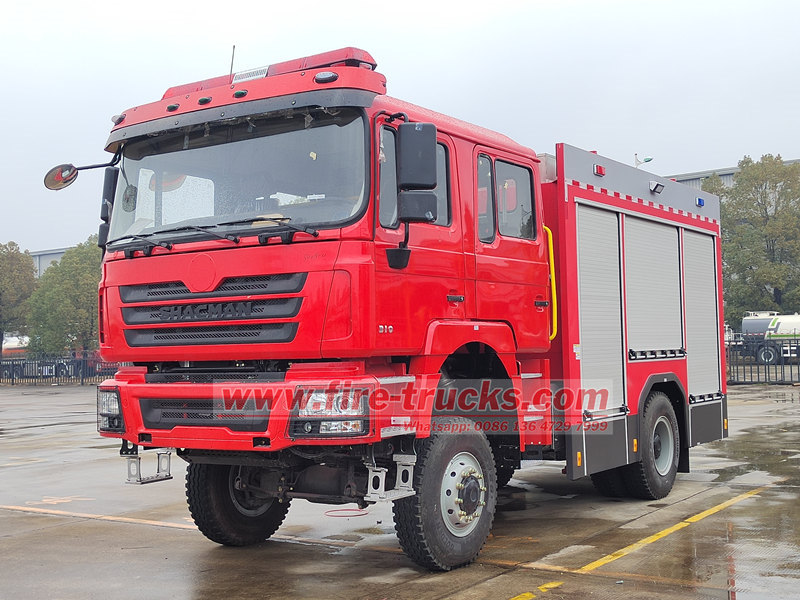
4. การใช้งานหลักของรถดับเพลิงโฟม
คุณสมบัติพิเศษของรถดับเพลิงโฟมทำให้รถดับเพลิงเหล่านี้มีความจำเป็นในหลายสาขาเฉพาะ เช่น:
• อุตสาหกรรมปิโตรเคมี:
นี่คือพื้นที่การใช้งานหลักของรถดับเพลิงโฟม เพลิงไหม้ในพื้นที่ถังเก็บน้ำมัน โรงกลั่น และโรงงานเคมีมักเกี่ยวข้องกับของเหลวไวไฟ ทำให้รถดับเพลิงโฟมเป็นอุปกรณ์ที่ได้รับความนิยมสำหรับสถานการณ์เช่นนี้ โดยทั่วไปแล้ว พื้นที่เก็บน้ำมันขนาดใหญ่จะมีรถดับเพลิงโฟมความจุสูงหลายคันติดตั้งไว้ เพื่อสร้างเครือข่ายดับเพลิงสามมิติ
• การดับเพลิงสนามบิน:
สนามบินการบินพลเรือนต้องมีรถดับเพลิงโฟมเฉพาะทาง (หรือที่เรียกว่า "รถดับเพลิงเร็ว") รถเหล่านี้มีความสามารถในการเร่งความเร็วได้อย่างยอดเยี่ยม ทำให้สามารถไปยังจุดใดก็ได้บนรันเวย์ภายในเวลาอันสั้นเพื่อดับไฟที่เกิดจากเชื้อเพลิงการบิน สนามบินบางแห่งยังใช้รถดับเพลิงโฟมน้ำหนักเบาที่ตั้งอยู่บนชานชาลารับผู้โดยสารเป็นหน่วยสนับสนุนด้วย
• การดับเพลิงแบบองค์รวมในเขตเมือง:
ด้วยจำนวนอาคารสูงและพื้นที่ใต้ดินที่เพิ่มขึ้นในเมือง รถดับเพลิงโฟมจึงมีบทบาทสำคัญเพิ่มขึ้นในการดับเพลิงในเมือง รถดับเพลิงเหล่านี้ไม่เพียงแต่สามารถดับไฟทั่วไปได้เท่านั้น แต่ยังรับมือกับสถานการณ์พิเศษต่างๆ ได้อย่างมีประสิทธิภาพ เช่น ไฟไหม้รถยนต์ในลานจอดรถใต้ดิน และไฟไหม้หม้อแปลงไฟฟ้า
• นิคมอุตสาหกรรม:
โรงงานผลิต คลังสินค้าโลจิสติกส์ และสิ่งอำนวยความสะดวกอื่นๆ หลายแห่งกำลังทยอยติดตั้งรถดับเพลิงโฟมหรือระบบโฟมขนาดเล็ก โดยเฉพาะอย่างยิ่งในสถานที่จัดเก็บวัสดุไวไฟจำนวนมาก รถดับเพลิงโฟมจึงให้การป้องกันอัคคีภัยที่เชื่อถือได้มากขึ้น
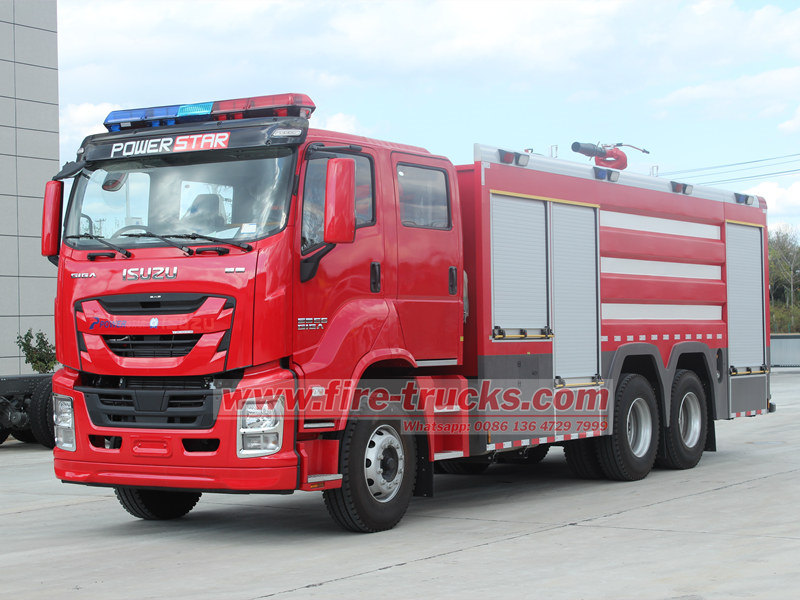
คุณอาจสนใจข้อมูลต่อไปนี้